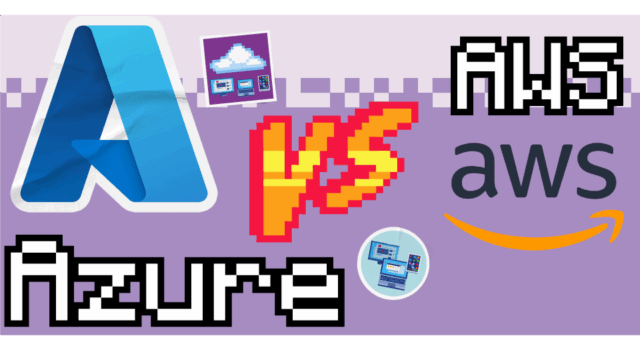Organisations are increasingly turning to cloud migration as step towards innovation, operational efficiency and long-term resilience.
Microsoft Azure is a market leading cloud platform, renowned for its scalability, robust security features, extensive global reach and seamless hybrid capabilities that allow businesses to bridge on-premises infrastructure with the cloud. So, it’s no surprise many organisations are now considering migrating to Azure for their cloud needs.
This comprehensive step-by-step guide will walk you through the essential stages of migrating to Azure. We’ll highlight best practices and equip you with the knowledge for a smooth transition to your new cloud environment.
Part 1: Assessing your current environment
Before embarking on your Azure migration journey, it’s crucial to gain a clear understanding of your existing IT landscape. A thorough assessment can allow you to plan your migration and make informed decisions. Here’s what to check:
- Inventory of existing infrastructure: Start by cataloguing your entire IT estate, including on-premises servers, virtual machines, databases, storage, networking devices and any applications running in other clouds. This inventory should detail hardware configurations, operating systems, dependencies and utilisation patterns. By mapping out your infrastructure, you’ll uncover hidden complexities, legacy systems and potential challenges early in the process.
- Identify workloads suitable for migration: Not every workload is equally well-suited for the cloud. Analyse your applications and services to determine which ones can benefit most from Azure’s capabilities. Factors to consider include performance requirements, compliance constraints, seasonality, criticality to business operations and the need for scalability.
- Identify how systems interact and communicate: Engage stakeholders from all business units to uncover hidden or critical business processes, including any shadow IT. This will allow you to spot potential bottlenecks or single points of failure, or any dependencies to bear in mind.
- Review security posture: Assess current network configurations, identity management practices and compliance frameworks. Identify and address any gaps that might impact migration, including data sensitivity and regulatory requirements that will inform your Azure region and service choices.
Azure Migrate can help you through the assessment. This discovery tool inventories all servers, virtual machines, databases, and applications, providing visibility into dependencies and utilisation. You can then use the assessment features to analyse readiness, estimate costs, and identify remediation actions.
The Azure Pricing Calculator is also handy at this stage. It enables you to project expenses in Azure, providing valuable financial insights to guide decision-making and plan finances.
Part 2: Planning your migration strategy
Once you’ve assessed your current situation, it’s time to plan the next steps.
Choosing the right migration approach
Azure offers several migration strategies, each with distinct benefits, costs and technical considerations:
- Rehost (lift and shift): This approach involves migrating your applications to Azure with minimal or no changes. It’s often the fastest route to the cloud, making it ideal for organisations looking for quick wins, minimising disruption or those with legacy systems that don’t require immediate transformation. While rehosting reduces migration complexity, it may not fully unlock the benefits of cloud-native features or deliver significant cost savings.
- Refactor (repackage): Refactoring involves making modest modifications to your applications, such as updating frameworks or decoupling certain components, so they run more efficiently on Azure. This approach enables you to take advantage of cloud capabilities like managed databases or containerisation without a full redesign, balancing the speed of rehosting with some cloud optimisation.
- Rearchitect: For workloads that require greater scalability, resilience or integration with new services, rearchitecting may be the best option. This approach redesigns application components to leverage Azure’s modern capabilities, such as microservices, serverless computing or event-driven architectures. While more resource-intensive, rearchitecting can yield substantial long-term benefits in performance, agility and cost-efficiency.
- Rebuild: In some cases, the optimal path is to rebuild applications from the ground up using Azure-native technologies. This approach allows you to fully exploit cloud innovation, but demands significant investment in development and change management. Rebuilding is typically reserved for critical systems where business transformation or competitive differentiation is a key driver.
Carefully evaluate each application and workload against these approaches, considering factors such as technical debt, business impact, time constraints and desired outcomes. This should guide you to the best approach – or an external consultant can advise.
Setting goals and KPIs
Clear objectives are the cornerstone of a successful migration. So, it’s important to establish concrete, measurable goals that align with your organisation’s strategic priorities, whether that’s reducing infrastructure costs, improving application performance, enhancing security or enabling faster innovation.
Examples of relevant KPIs could include:
- Reduction in operational costs or infrastructure overheads
- Improvement in application response times or availability
- Time to migrate critical workloads
- Reduction in unplanned downtime during and after migration
- Compliance with security or regulatory requirements
- User or customer satisfaction metrics
These metrics will anchor your migration plan, provide accountability and facilitate communication with stakeholders throughout the journey.
Creating a migration roadmap and timeline
A well-structured migration roadmap transforms strategy into action. Begin by mapping out the migration sequence, prioritising workloads based on business value, complexity, interdependencies and risk profile.
It’s often prudent to start with low-risk, non-critical systems to build experience and confidence before moving on to mission-critical or complex applications.
Other key steps in building your roadmap:
- Define migration waves or phases, grouping workloads with similar characteristics or dependencies
- Establish clear milestones for each phase, such as assessment completion, application readiness, pilot migrations and post-migration validation
- Allocate resources, including technical teams, business stakeholders and support functions
- Estimate realistic timelines, factoring in the need for testing, staff training, change management and contingency planning
- Document communication plans to keep all stakeholders informed and engaged
A visual timeline or Gantt chart can help track progress and identify blockers early. Review and adjust the roadmap as needed, staying agile and responsive to challenges or learnings along the way.
Part 3: Preparing your Azure environment
Before you undertake the migration, you need to set up your Azure environment.
Begin by establishing an Azure subscription tailored to your organisation’s needs. This forms the foundation for all subsequent configuration and resource provisioning. You can choose from several subscription options, including pay-as-you-go, free trial (which offers credits for initial experimentation) or enterprise agreements tailored to organisational needs.
After registering, you’ll be able to create and manage resources through the Azure portal and set up billing and usage monitoring to keep spending in check.
Organising resources with Resource Groups
Next, you need to structure your environment by creating Resource Groups. These logical containers hold related Azure resources such as virtual machines, storage accounts and networking components.
Organise these groups according to project, environment (development, testing, production) or business unit, ensuring clear boundaries and easier management. It’s also wise to implement consistent naming conventions and tagging strategies to aid discoverability, reporting and cost allocation.
Finally, you need to assign appropriate billing and administrative contacts, and review subscription governance options like Management Groups for larger environments.
Networking setup
Next, you need to design a robust networking architecture that lays the groundwork for secure, seamless connectivity. Start by creating Virtual Networks (VNets) to segment your environment and control network address spaces. Then, use Subnets to further segment resources within a VNet according to their function or security requirements.
Protect your network with Network Security Groups (NSGs), which allow you to define granular inbound and outbound traffic rules for subnets or individual resources. For secure connectivity between on-premises infrastructure and Azure, configure Virtual Private Networks (VPNs) or, for high-performance and private connectivity, consider Azure ExpressRoute. Ensure that routing, DNS and firewall policies are aligned with your organisation’s security posture.
Identity and access management
Azure Active Directory (Azure AD) enables you to centralise identity and access management with your Azure environment. It brings single sign-on (SSO), multi-factor authentication and conditional access policies, helping protect resources while simplifying user access.
Within Azure AD, you’ll need to define role-based access control to grant least-privilege permissions and establish processes for onboarding and offboarding users and service principals.
Part 4: Executing the migration
To ensure a smooth migration, leverage Azure-native tooling designed to support each phase of your journey.
Azure Migrate comes into play again here, enabling replication of on-premises servers to Azure, whether they run on VMware, Hyper-V or physical hardware. This near-real-time replication ensures data consistency and minimises downtime during the eventual cutover.
Throughout the migration process, monitor workloads closely, iterate as necessary and maintain clear documentation. Engage stakeholders early and often to ensure alignment and avoid surprises during go-live. It’s also worth performing test migrations before the real deal to ensure there are no issues.
With the right tools and a methodical approach, you’ll deliver a successful transition to Azure, laying the foundation for ongoing innovation and operational excellence.
Migrating databases with Azure Database Migration Service (DMS)
For database migration, DMS provides a robust, guided experience for moving data with minimal downtime. DMS supports a range of source and target database engines, such as SQL Server, MySQL, PostgreSQL, Oracle and more.
Use it to assess compatibility, set up replication and execute migrations, whether you’re moving to Azure SQL Database, Azure Database for MySQL or another managed platform. Take advantage of offline and online migration modes to suit your business continuity requirements.
Application migration tips
When migrating applications, consider a staged approach that aligns with your cloud adoption strategy:
- App Service: For web applications, Azure App Service offers a fully managed platform. Use the App Service Migration Assistant to evaluate readiness and automate much of the migration process. Review dependencies on custom components, storage and networking, adjusting configurations as needed.
- Containers: Containerise applications where feasible to enhance portability and scalability. Azure supports a range of container services including Azure Container Instances (ACI) and Azure Kubernetes Service (AKS). For large-scale or mission-critical workloads, AKS offers enterprise-grade orchestration and integration.
- Azure Kubernetes Service (AKS): If you’re already using Kubernetes or planning to modernise applications, migrate workloads into AKS. Take time to reassess architecture, security policies, and continuous deployment processes to leverage the full benefits of cloud-native operations.
Post-migration optimisation
Now your Azure environment is live, it’s time to optimise for even better results.
Start by monitoring workloads using Azure Monitor and Application Insights, scaling resources and optimising configurations as needed. Use Azure Advisor for targeted performance improvements.
You can also control spending by setting budgets and tracking usage within Azure Cost Management + Billing. Optimise costs by removing unused resources and exploring reserved instances or spot pricing.
This stage is also ideal for strengthening security with Azure Security Center, including enforcing least privilege principles and applying security baselines. Regularly assess compliance and address any gaps.
Finally, protect data with Azure Backup and ensure business continuity using Azure Site Recovery. Regularly test your backup and recovery plans.
Common challenges to overcome
When migrating to Azure, challenges can arise. Proactively anticipating and addressing these can make the difference between a smooth transition and protracted difficulties. We’ve listed the most common obstacles we’ve seen in our experience, and best practice to avoid.
- Downtime and data loss risks: Migrating workloads involves moving critical data and services, which can expose the organisation to periods of unavailability or data loss. Avoid issues by carefully planning staged migrations, thorough testing and rollback strategies. Ensure backups are recent and recovery procedures are in place before making significant changes.
- Compatibility issues: Legacy applications or custom integrations may not always operate seamlessly in the cloud. Overcome this by conducting comprehensive assessments to identify incompatibilities with operating systems, middleware or third-party dependencies. You can leverage Azure’s compatibility tools and consider refactoring applications or using containers to mitigate these issues.
- Cost overruns: Without meticulous planning, migration costs can spiral. Use Azure’s cost estimation and monitoring tools from the outset and continuously review resource allocation. Optimise workloads post-migration to avoid underutilised resources and prioritise spending transparency to keep your cloud journey on budget.
- Change management and user training: A successful migration isn’t just technical; it’s cultural. Staff need to adapt to new workflows, interfaces and processes. Invest in clear communication, robust change management plans and tailored training programmes to build confidence and encourage adoption across your teams.
Migrate to Azure with support and confidence
Adopting the right approach to Azure migration is not just a matter of efficiency; it’s essential for safeguarding your organisation’s data, controlling costs and ensuring sustained operational success. The complexity of cloud environments means that missteps can quickly lead to security vulnerabilities, unnecessary downtime or ballooning costs. That’s why having a thoroughly planned, expertly guided migration strategy is critical.
While internal teams may possess valuable knowledge of existing systems, the nuances of cloud migration often demand specialist expertise. An external expert brings deep knowledge of best practices, familiarity with potential pitfalls and the ability to foresee and mitigate challenges before they arise. Their objective perspective ensures that every stage is executed with precision, helping you achieve a seamless, secure and cost-effective transition.
Don’t leave your cloud journey to chance. Discover how our dedicated cloud consultancy services can provide the expertise and strategic guidance you need for a successful Azure migration.




